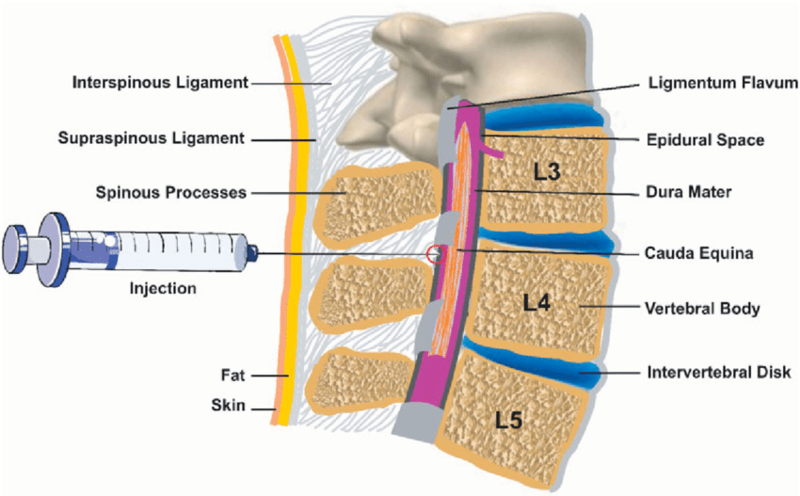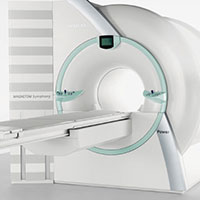Back pain affects up to 80 percent of people at some point in their lives. It can be caused by many different things, like an injury, poor posture, or obesity. If your doctor has ruled out other causes for your pain and it’s been going on for more than three months, then epidural steroid injections (shots for back pain) may be an option to relieve your discomfort.

How Common is Back Pain?
You may be surprised to learn that back pain is a prevalent medical condition.
- Estimates say 8 out of 10 adults experience back pain during their lifetimes. Plus, according to the CDC, “25% of U.S. adults report having low back problems in the last three months. It is the most common pain reported.”
- Back pain is a top cause of missed workdays.
- Lower back pain is one of the top reasons people visit their doctors. (Doctors only see skin problems and joint disorders related to osteoarthritis more frequently).
Common Back Pain Treatments
First-line treatments often include rest or heat or ice therapy. Over-the-counter pain relievers, including non-steroidal anti-inflammatory drugs (NSAIDs), may work, too. Beyond OTC medications, your doctor may prescribe muscle relaxers or narcotics.
Physical therapy may be another course of treatment, especially for chronic back pain. Physical therapy typically includes exercises designed to strengthen back, low back and stomach muscles. It also strives to improve flexibility and posture, both components of good back health.
Surgery might be an option for many cases, but it is often not necessary. Doctors can only suggest this treatment after all other treatments have failed to provide any relief.
Another option for chronic back pain may be an epidural injection. This choice is often used after non-surgical treatments but before back surgery.
Shots for Back Pain
What is an Epidural Injection?
An Epidural steroid injection (ESI) – more commonly known as a back pain injection – is a technique that provides relief from lower back (and arm or leg) pain by reducing inflammation around the spine.
Guided by real-time X-rays (fluoroscopy), the procedure is performed by injecting a steroid into the epidural space around your spinal cord and nerve roots.
Depending on the severity of the pain and inflammation, patients may receive a series of three injections. The injection procedure works on the spinal nerves by flushing away the proteins that cause swelling, thus reducing inflammation.
The steroid used includes a corticosteroid (an anti-inflammatory drug) and a local anesthetic (a numbing agent). The pain relief can last from days to months. This time allows your spinal condition to improve (sometimes combined with physical therapy and exercise).

When Might an Epidural Injection Be Used?
Epidural injections may be used for conditions such as:
- Herniated or bulging disks that cause nerve pain
- Other forms of sciatica
- Narrowing of the spinal canal (spinal stenosis)
- Other injuries to spinal nerves, vertebrae and surrounding tissues
- Bone spurs
- Degenerative disc disease
- Nerve root pain
- Other back issues
Benefits and Risks of Epidural Steroid Injections
When considering shots for back pain relief, you should take into account both the risks and benefits.
Of course, the biggest reason to consider an epidural lumbar injection is for back or leg pain relief. The procedure is considered minimally invasive and only takes a few minutes. You can go home the same day. On the downside, there may be side effects and possible complications.
Side effects of the injection may include headaches, nausea, dizziness, or a steroid flush (redness around the face). Also, your pain may get worse for a day or two before it gets better.
Though rare, more serious conditions may include things like allergic reactions, bleeding, nerve damage, and infections at the injection site. Also, a dural puncture may cause temporary leg numbness.
It is also important to remember that the injection is not a fix for the root cause of your pain, but a short-term pain management technique. It can relieve back pain while your back heals, or it may help delay back surgery.
What Should I Expect During the Procedure?
For more about what to expect during an epidural pain injection and how to prepare, visit our main back pain injection page.
More Information and Scheduling
If you’re suffering from chronic back pain and want to learn more about shots for back pain relief, ask your doctor about your options, including epidural injections. Contact our office today if you and your healthcare provider determine an epidural steroid injection is appropriate for you. We’ll be happy to answer any questions you may have about epidural injections or any other treatment we offer.
Call Premier Diagnostic Imaging at (931) 528-1800.
Sources
https://www.radiologyinfo.org/en/info/epidural
https://www.cdc.gov/acute-pain/low-back-pain/index.html
How Common is Back Pain
Rubin Dl. Epidemiology and Risk Factors for Spine Pain. Neurol Clin. 2007; May;25(2):353-71.
https://hpi.georgetown.edu/backpain/
https://www.ncbi.nlm.nih.gov/pmc/articles/PMC3564521/
Medically reviewed by Dr. Seth Means




